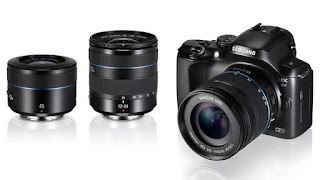Remote camera control – Capturing photos with perfection and precision
A Lightning is significantly more difficult to
capture than the burst of firecrackers. With firecrackers, you have an idea of
where and when the flash will occur. With lightning, the flash is more
hit-and-miss which is why you need a remote camera control for capturing with
precision.
In light of the unconventionality of lightning
strikes, this sort of photography requires a lot of tolerance. It might take a
few shots, or even a few storms, to capture the look you need.
Additionally, take some time when the climate
is obvious to locate a couple of areas that will give you an unmistakable view
of the sky and skyline when the storms start. If you are not physically present
at the site, even then you can capture beautiful photos of the lightning
through using the remote camera control.
Use the settings to
your advantage
Utilize a tripod or other level surface to
unfaltering the camera. You will need to utilize longer screen speeds during
the evening, so an unfaltering camera is critical.
Utilize manual control settings to open the
shade for quite a while. The odds of you squeezing the shade catch at simply
the opportune time to capture the fast lightning strike are little. In case
you're experiencing difficulty with your planning, set your camera's shade
speed to 15 or 30 seconds, which you can do physically with numerous cameras.
At that point open the shade and seek after a lightning strike in the edge.
Utilizing a remote globule to trigger the screen can help too.
Keep in mind of the
circumstances
Clearly, a large portion of the edge for your
photos when shooting lightning will be of the sky. Be that as it may, you can
add some fascinating perspectives to your photos with some different questions
in the picture. For instance, shooting lightning over a waterway can make an
intriguing impact of the lightning reflecting off the obscured water surface.
Or on the other hand you can consider if you have a tall tree or fascinating
man-made structure in the closer view that will wind up noticeable from the
light produced by the lightning, which can make an intriguing impact, as well.
Utilize some after creation traps. Clearly, you
have seen the lightning photos that contain various strikes in a single casing,
ones that don't seem as though they could have happened normally. They probably
haven't. Rather, on the grounds that you are most likely shooting the lightning
photos in a steady area with a tripod and all the camera accessories, you will have different pictures with a similar
fundamental foundation, with fluctuating lightning strikes in each picture. You
can take a stab at joining the various pictures into one picture in after
generation, making a look with numerous strikes in a single edge.
Conclusion
Watch out for the storms. Keep a climate radio
with you, so you can track the development of the storm. Losing your gear to
rain or high breeze would be a sad consummation of your lightning photography
encounter.
Follow us: https://twitter.com/plutovalve/





Comments
Post a Comment